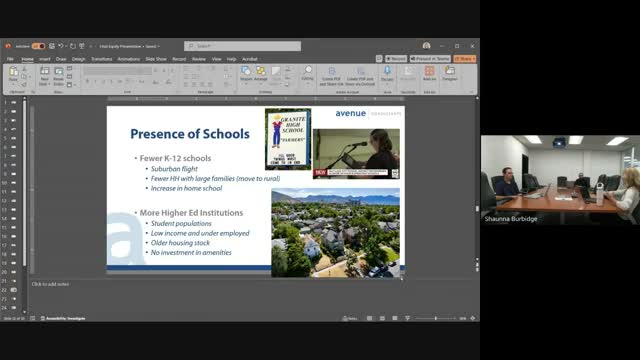Roadway design linked to rising pedestrian fatalities
October 13, 2024 | Utah Department of Transportation, Utah Government Divisions, Utah Legislative Branch, Utah
This article was created by AI summarizing key points discussed. AI makes mistakes, so for full details and context, please refer to the video of the full meeting. Please report any errors so we can fix them. Report an error »

In a recent government meeting, officials discussed critical transportation and public safety issues, highlighting the need for improved infrastructure and maintenance in vulnerable areas. The conversation centered around the complexities of signalized intersections, particularly in high-traffic zones where pedestrian safety is at risk. Data revealed that these intersections, often characterized by multiple lanes and dedicated turn lanes, are associated with higher rates of severe injuries and fatalities for pedestrians.
Officials emphasized the trade-off between vehicle mobility and pedestrian safety, noting that efforts to optimize traffic flow often neglect the needs of those reliant on walking, biking, or public transit. The discussion pointed to the alarming correlation between increased vehicle miles traveled (VMT) and adverse health outcomes, including respiratory issues and heart disease, due to pollution from heavy traffic.
Noise pollution was also identified as a significant concern, affecting both mental and physical health for residents living near major roadways. The meeting underscored the importance of considering these externalities when planning transportation infrastructure.
Additionally, the state of road quality in these areas was brought to light, with 64% of roads in vulnerable neighborhoods rated as fair or poor. Poor pavement not only compromises safety but also affects vehicle performance, leading to potential damage and increased repair costs for residents.
The discussions highlighted an urgent need for a comprehensive approach to transportation planning that prioritizes safety, health, and equity for all community members.
Officials emphasized the trade-off between vehicle mobility and pedestrian safety, noting that efforts to optimize traffic flow often neglect the needs of those reliant on walking, biking, or public transit. The discussion pointed to the alarming correlation between increased vehicle miles traveled (VMT) and adverse health outcomes, including respiratory issues and heart disease, due to pollution from heavy traffic.
Noise pollution was also identified as a significant concern, affecting both mental and physical health for residents living near major roadways. The meeting underscored the importance of considering these externalities when planning transportation infrastructure.
Additionally, the state of road quality in these areas was brought to light, with 64% of roads in vulnerable neighborhoods rated as fair or poor. Poor pavement not only compromises safety but also affects vehicle performance, leading to potential damage and increased repair costs for residents.
The discussions highlighted an urgent need for a comprehensive approach to transportation planning that prioritizes safety, health, and equity for all community members.
View full meeting
This article is based on a recent meeting—watch the full video and explore the complete transcript for deeper insights into the discussion.
View full meeting

